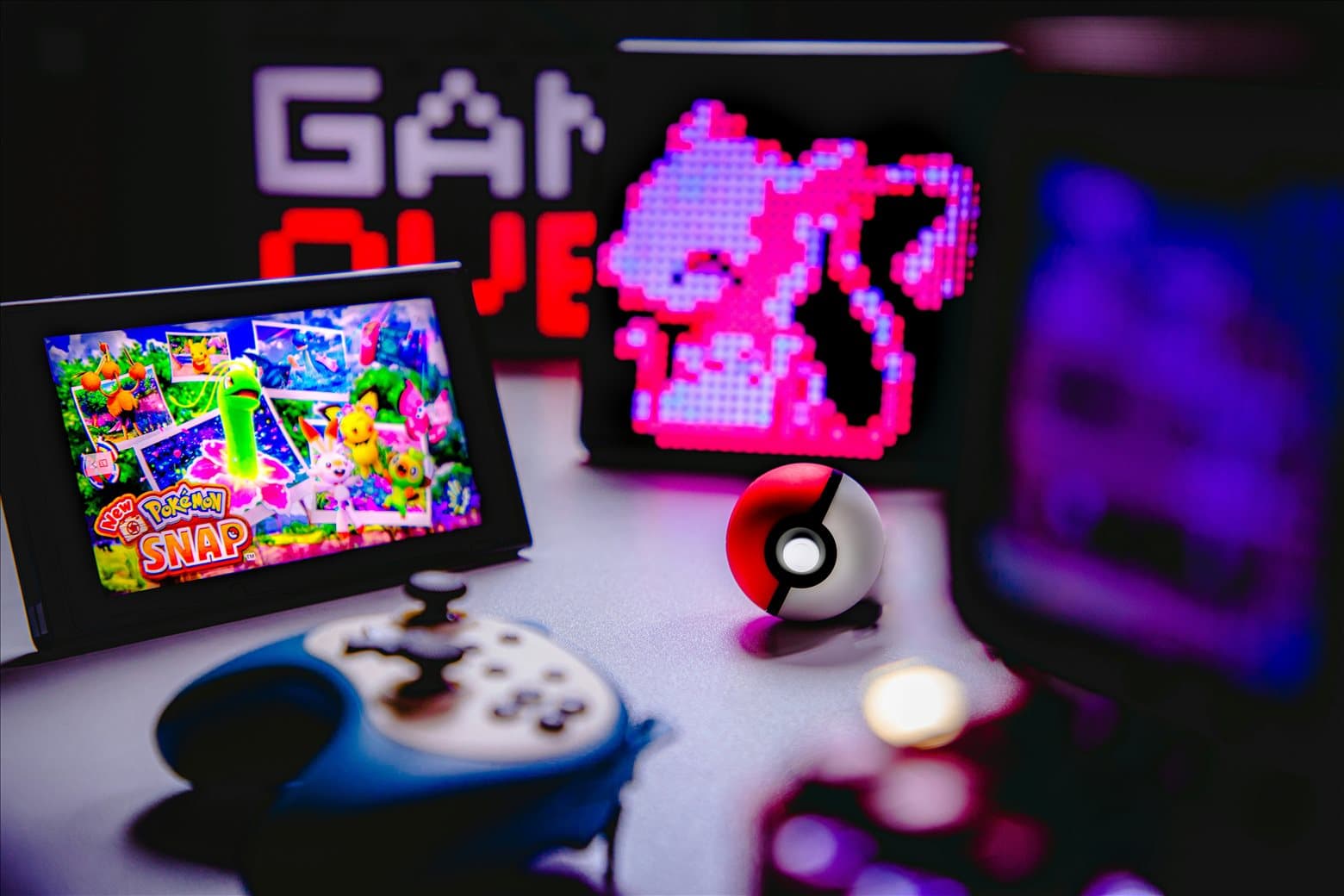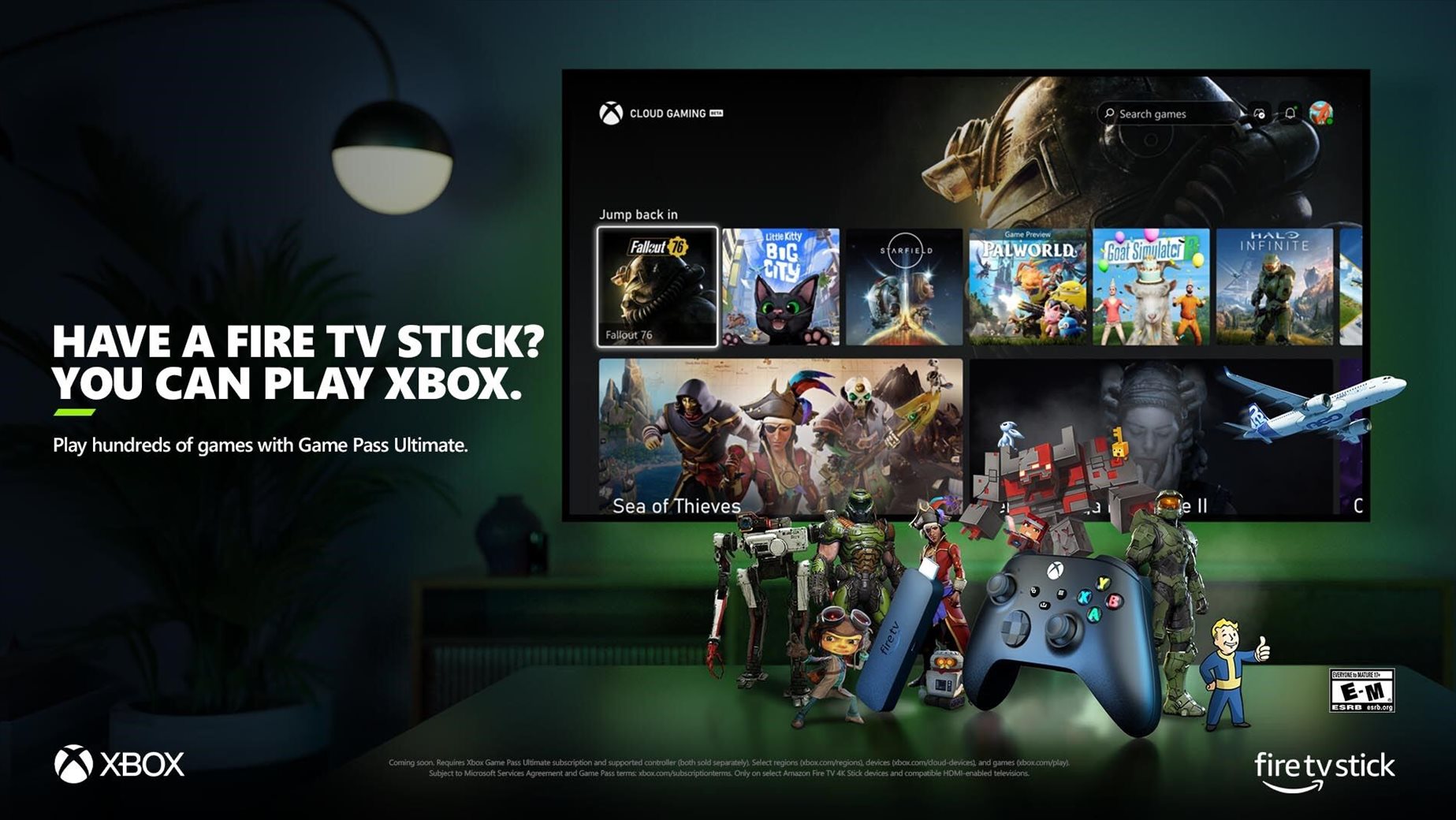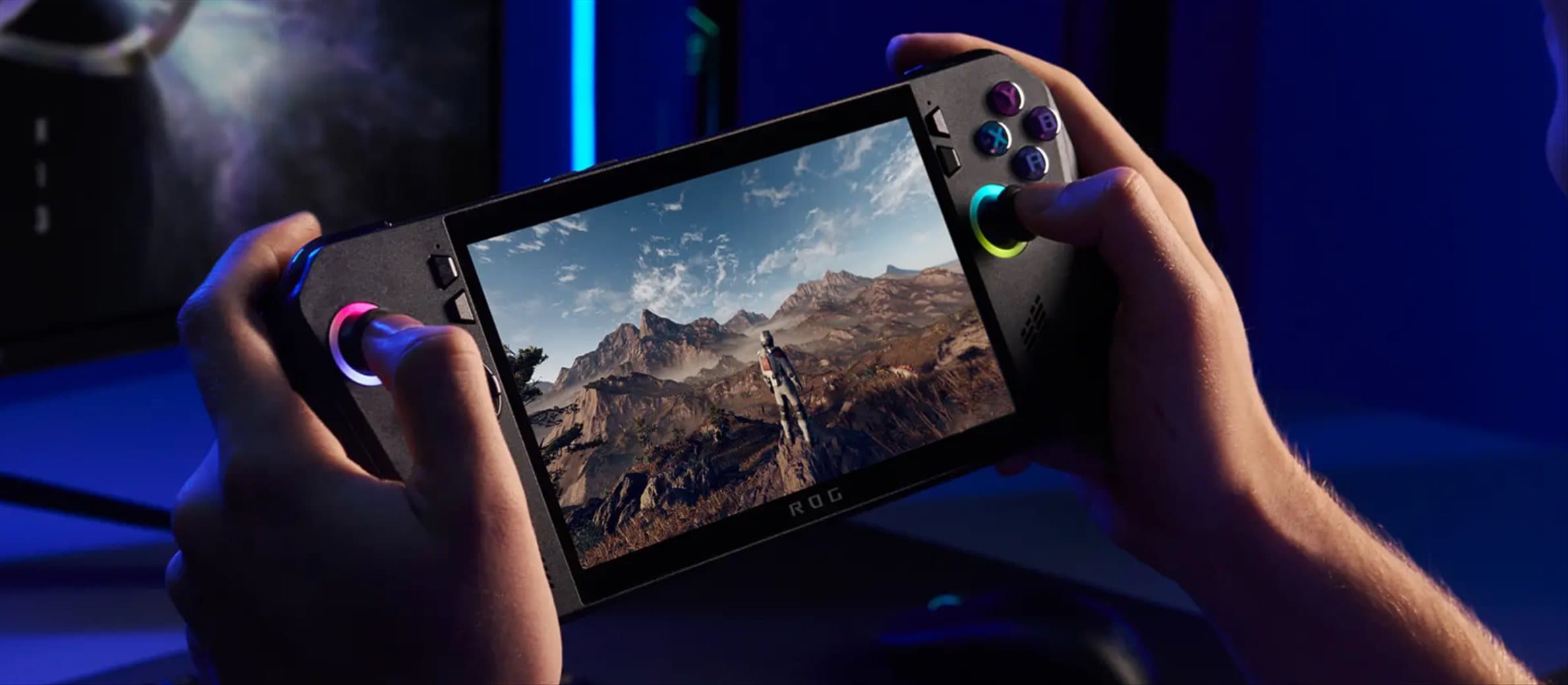In 2022, Valve released Steam Deck, a handheld console set to revolutionize the gaming industry. The Steam Deck is a close rival of the Nintendo Switch. And when we compare the newer Steam Deck OLED vs Nintendo Switch OLED, the American brand may dominate handheld gaming soon.
It is no doubt unfair to compare Steam Deck to a Nintendo Switch. While we can place both in the group of handheld gaming consoles, the Steam Deck OLED is basically a mini-gaming PC. But, of course, there are features on the Switch it doesn’t have.

In this quick guide, the idea is to help you make the right buying decision between Steam Deck OLED or Nintendo Switch OLED. The post compares how the two consoles compare on crucial handheld gaming aspects, including portability, visuals, flexibility, etc.
Verdict: 5 Reasons Steam Deck OLED is the Best Handheld Gaming Console
- Steam Deck OLED can run heavy PC games a Switch can’t
- Steam Deck OLED supports WiFi 6e for faster downloads than Switch
- Steam Deck OLED has an internal storage of up to 1TB versus 64GB of Switch
- Steam Deck OLED has an HDR feature for clearer, more natural graphics than the Switch
- Steam Deck OLED outputs videos at up to 8K and 4K resolution versus 1080p on Switch
Steam Deck OLED vs Nintendo Switch OLED: Comparing Basic Features & Capabilities
| Steam Deck OLED | Nintendo Switch OLED | |
| Release Year | 2023 | 2021 |
| Dimensions | 298mm x 117mm x 49mm | 242mm x 102mm x 13.9mm |
| Approx 1.41 lbs | Approx 0.93 lbs | |
| Processor/ Chip | 7nm AMD Zen 2 | 16nm Nvidia Tegra X1+ |
| CPU | 4x Cores @ 2.4-3.5GHz | 4x Cores @ 1.02-2GHz |
| CPU | AMD RDNA 2 based @ 1.0 –1.6 GHz | Nvidia Maxwell-based @ 307.2 -786 MHz |
| Memory (RAM) | 16 GB LPDDR5 | 4 GB LPDDR4 |
| Storage | 512GB or 1TB + MicroSD | 64GB Internal + MicroSD |
| Integrated Display | YES (7.4-inch w/ HDR) | YES (7 inch) |
| Resolution of Built-in Display | 800p HD+ @ 90Hz | 720p HD @ 60Hz |
| Resolution of Video Output | Up to 8K@60Hz or 4K@120Hz | 1080p@60Hz |
| Supported Game Format | Digital | Game Cards & Digital |
| Rechargeable Battery | YES | YES |
| Wireless Connectivity | WiFi6, WiFi5, and WiFi4 | WiFi5 and WiFi4 |
| Wired Connectivity | N/A (with the optional dock) | RJ-45 (Ethernet) |
| Standard 3.5mm Audio Jack | YES | YES |
| USB Port Type | USB-C | USB-C |
| HDMI Output | YES (on dock) | YES (on dock) |
| Bluetooth Connectivity | YES (V5.3) | YES (V4.1) |
| Built-in NFC Chip | N/A | YES |
| Built-in Speakers | YES | YES |
Steam Deck OLED launched in November 2023, and from the chart here you can see it’s far superior. the handheld console is an upgrade of the original Steam Deck that came out in 2022.
As an upgrade, the Steam Deck OLED has an “OLED” display with HDR instead of LCD. So, you’ll notice the visuals appear brighter, clearer, and more natural while gaming.
For an even better gaming experience, Valve, the manufacturer of Steam Deck, increased the screen size from 7 to 7.4 inches. It may not sound as a big difference but it’s noticeable when placed side by side to a Nintendo Switch.
The Nintendo Switch OLED has a 7-inch “OLED” display that also brings you vibrant visuals while gaming. But you’ll notice the colors aren’t as pure as on the new Valve Steam Deck since the Switch doesn’t have a built-in HDR.
More on that, let’s jump to our full Steam Deck OLED vs Nintendo Switch OLED review and see what you should get.
Steam Deck OLED vs Nintendo Switch OLED: Best of Budget
Are you looking for the cheapest handheld gaming console with rich visuals? Valve has made the Steam Deck OLED in two different variations: 512GB OLED and 1TB OLED. The Steam Deck OLED 512GB costs around $549 US, whereas the 1TB version goes for $649.
On the other hand, the Nintendo Switch OLED costs $350 to $360 US, depending on the store you use. Thus, $190 to $300 cheaper than the Steam Deck OLED console.
Besides being cheaper, the Nintendo Switch comes with a dock station for connecting to a larger external monitor/ TV. Valve only sends the Steam Deck consoles, then you’ll have to purchase the optional Dock station separately (about $80).
Note: when looking at PlayStation Portal or Nintendo Switchthe other day, we saw the two have an official Australian price.
Unfortunately, we still have no official price for Steam Deck OLED or LCD in Australia. In fact, none of the official resellers of Nintendo consoles have Steam Deck or accessories at the time of writing. So, the only way to own one in the country will be to purchase through a third-party seller.
Steam Deck OLED vs Nintendo Switch OLED: Best of Portability
Both the Nintendo Switch and Steam Deck OLED are great handheld consoles for gaming on the go. They’re lightweight and compact enough to fit your backpack or traveling bag.
Nonetheless, the Nintendo Switch OLED is relatively smaller in size and lighter than the Steam Deck. It measures 242mm x 102mm x 13.9mm and about 0.93 lbs with controllers attached, whereas the Steam Deck sits at 298mm x 117mm x 49mm and 1.41 lbs.
Even better, the right and left Joy-Con controllers of the Nintendo Switch OLED are also removable. So, you can never lack a place to squeeze it when traveling.
Steam Deck OLED vs Nintendo Switch OLED: Best of Performance
As I mentioned earlier, the Steam Deck OLED is more of a handheld gaming PC. A quick peek at the specs reveals a 4-core AMD Zen 2 processor that operates at 2.5GHz by default and 3.5GHz boost during heavy loads. The (RDNA 2) GPU onboard complements this CPU at a default frequency of 1GHz (1000MHz) to 1.6GHz (1600MHz) on boost mode.
For most of us, all these tech jargons are something we can barely understand. But in simple words, this Zen 2 chip has been powerful enough to run larger Xbox and PlayStation consoles, as well as Ryzen desktop CPUs. So, the Steam Deck OLED, despite running on fewer cores than these larger systems, is a league way ahead of the Switch.
Nintendo Switch OLED utilizes the Nvidia Tegra X1+ processor. While fast enough for hundreds of games, it has a relatively slower performance: 1.02GHz CPU, GPU at 307.2MHz (handheld mode) or 786MHz (docked mode). Thus, there are various competitive cross-platform games you won’t be able to play at all or efficiently.
Steam Deck OLED vs Nintendo Switch OLED: Best of Video Game Visuals
Again, the OLED display of our two handheld gaming consoles has more amazing visuals than their LCD counterparts. When we compare the two side by side, though, the display of Steam Deck OLED appears brighter and with deeper colors. The results here are from the slightly wider display, with more pixels and an HDR feature to improve the visuals of supported games.
I should also mention Steam Deck OLED display plays at a maximum resolution of 800p @ 90Hz. Thus, you’ll notice the video games appeal smoother than the screen of Nintendo OLED that maxes at 720p @60Hz resolution.
Moreover, the Nintendo Switch OLED doesn’t have an HDR feature on the Steam Deck.
Steam Deck OLED vs Nintendo Switch OLED: Best of Gaming Flexibility
When it comes to gaming flexibility, Nintendo Switch and Steam Deck OLED both should get a point. You have the option to game on the handheld mode or docked to an external monitor/ TV.
In the handheld mode with a Nintendo Switch OLED, you only need to attach the Joy-Con controllers on the sides. You can also use the Switch in a Tabletop mode by flipping the stand on the back and sitting it on a flat surface. Then, pass one of the Joy-Con controllers to a friend for more fun, or connect to the Joy-Con Grip for longer playing hours.
Besides the handheld and tabletop modes, you can also use the Nintendo Switch OLED docked to the TV. Nintendo offers the Switch as a complete kit with a dock and HDMI. So, you need no extra purchases, as it might be with the Steam Deck.
Steam Deck Handheld and Docked Mode
Valve’s Steam Deck OLED is primarily for video gaming on the go. Unlike the Switch, it has built-in (non-removable) controllers. But the controllers aren’t just the regular directional and action buttons.
The Deck also has a capacitive trackpad that makes it possible to play PC games a Nintendo Switch can’t handle. Then, it has four grip buttons on the back that give you better gaming control, with a firmer grip of the thumbstick and trackpad.
If not in the handheld mode, Steam Deck OLED can be connected to a larger external monitor for an immersive viewing experience. You can connect the Deck to a TV/ monitor like Dell 3423DWC through its USB-C port, which carries video and audio data in addition to power.
If you don’t have a TV or monitor with a USB-C upstream/ display port, Valve has a dock station that connects your Steam Deck on HDMI. However, the company offers the dock as an add-on accessory and you’ll have to purchase it separately.
Tip: when docked, Steam Deck OLED outputs your videos at a resolution of up to 8K@60Hz or 4K@120Hz. And that gives sharper visuals than a docked Nintendo Switch at 1080p@60Hz.
Steam Deck OLED vs Nintendo Switch OLED: Best of Video Game Library
Steam Deck OLED is the clear winner here, with the potential to run hundreds of video games a Nintendo Switch can’t handle. The game collections include some of the best PC games like Everspace 2 and Diablo IV, as the Deck is a handheld computer.
The PC games are a bit bulky, with the likes of Elden Ring clocking up to 60GB and Diablo at 90GB. Then again, the Steam Deck OLED has 512GB internal storage and a slot to insert a MicroSD card.
As for the Nintendo Switch OLED, the storage is a bit limited: 64GB internal and a slot to insert a MicroSD card. So, competitive games like the Elden Ring can’t run on the Switch at the moment, albeit there have been rumors of a Switch-compatible version.
Even without the Elden, a Nintendo Switch OLED has many epic, entertaining games. You can play many competitive cross-platform games like The Witcher, Batman, Hogwarts, Final Fantasy, etc. But most use the Switch for the exclusive family-oriented Nintendo games of Mario, Pokemon, Splatoon, etc.
Key Takeaway: A Console for More Than Gaming
Nintendo Switch OLED or Steam Deck OLED can be used for more than video gaming. Nonetheless, the Valve’s Deck will be taking the point as you can set it to Linux Desktop mode.
In the desktop mode, the Steam Deck can run various Windows functions. It has a pre-installed browser you can use to stream videos or download software like photo editors, Office Suite, an emulator of Xbox/ PlayStation, et cetera.
As for the Nintendo Switch OLED, you can install other mobile apps, like YouTube or Netflix for streaming. Thus, a pretty cool hack to turn your old TV into a smart TV.
Frequently Asked Questions
Which is better, a Nintendo Switch and Steam Deck OLED?
Overall, the Nintendo Switch OLED is better than the Steam Deck OLED at the price point. It’s up to $300 to $400 cheaper than the Deck, depending on whether you also get a dock station. It also has a built-in NFC chip, enabling interaction with Amiibo to make your gaming more fun.
The Steam Deck has no NFC for now, but it’s still better than a Nintendo Switch on performance. It has a more powerful CPU, which supports heavy games like Elden Ring not on the Switch.
The Valve’s Deck is also better than Nintendo’s Switch on versatility as you can set it on a desktop mode. Then, use it for some PC functions like Windows Office suite, browsing, photos/video editors, etc.
How can I get Steam Deck OLED in Australia?
Unfortunately, we still have no official release of Steam Deck OLED or LCD consoles in Australia. You can only purchase the Deck from third-party resellers in the US, UK, Canada, or Japan, which can be a little expensive.
Is it true the Steam Deck is as powerful as the PS5 console?
No, the Steam Deck is not as powerful as the PS5. While they both utilize a Zen 2 processor, the PS5 is twice as fast as the Deck on both the CPU and GPU clock speed.
However, the Steam Deck is still a high-performance small PC, capable of running many PS5 games that other handheld consoles can’t.






